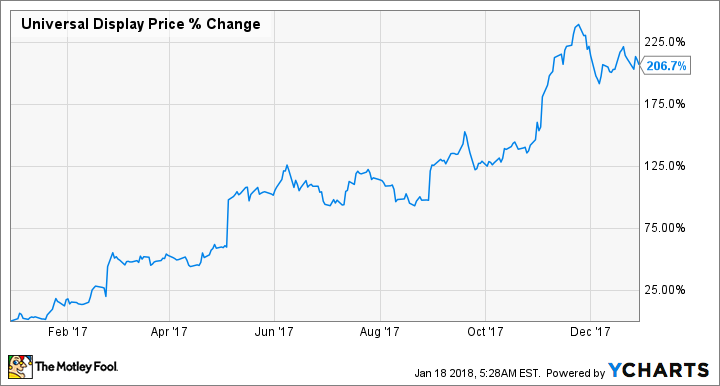Lots of new TVs and other device displays using OLED technology were exhibited at the 2018 Consumer Electronics Show (CES) in Las Vegas. The technology has been around awhile, but adoption has been slow for a variety of factors. However, manufacturers continue to increase their use of the displays, and the day when OLEDs are the rule rather than the exception may be right around the corner.
What is OLED
OLED, or Organic Light Emitting Diode, is different from other screen types like LED or LCD. Whereas LED and LCD screens use a crystal display and a backlight shining through them to project an image onto screens, OLED technology requires no such lighting. Instead, the OLED panel emits its own light when an electric current passes through it.
So what? Well primarily because the individual pixels in an OLED display are emitting light rather than relying on another lighting source, the final image is much more vibrant and moving images are smoother. Secondly, OLED is typically a thinner, lighter, and more energy-efficient display than its LED and LCD counterparts.
What it was doing at CES
Because it is newer, OLED has been much more expensive than older display types. That is beginning to change, though, as manufacturers have been dumping research and development dollars into the technology to make it more viable.
At CES this year, TVs were a big draw, with the likes of Samsung (NASDAQOTH: SSNLF) and Sony (SNE 0.67%) all demonstrating new models. LG Electronics (NASDAQOTH: LGEAF) stole the show, though, with its new lineup of ultra-high-definition 4K OLED-powered TVs, including a 65-inch display prototype that could roll up into different sizes or completely roll away into a box. The company also featured TVs that could be mounted on the wall like wallpaper.

LG's Signature 77-inch OLED TV. Image source: LG.
During the most recent holiday shopping season, OLED TVs still cost in the four figures, although some lower-end models from LG were nearing the $1,000 mark. LEDs, by comparison, are easy to find with a three-digit price tag.
Besides TVs, smartphones are also getting OLED technology. Another notable piece of hardware at CES was a fingerprint reader embedded directly underneath an OLED display from Synaptics (SYNA +0.47%). The company argues that its security feature is superior to 3D facial recognition. That's debatable, but it shows off yet another application of the ultra-thin displays.
Perhaps most famous among phones offering an OLED option is Apple's (AAPL 1.00%) iPhone X. It's priced at $1,000 versus $700 for the iPhone 8 to make up for the display hardware upgrade.
How to bet on OLED
With better picture quality, lower power requirements, versatile application, and falling price, OLED looks like it's on its way to becoming the new gold standard. While it may be tempting to jump on end-user manufacturers' stocks like Samsung, LG, Sony, and even Apple, the best way to bet on the tech could be a relatively unknown company behind the scenes.
Universal Display (OLED +1.71%), which holds numerous patents and provides equipment and materials used in the construction of the new displays, has been the biggest benefactor so far. The company's stock had a knockout 2017, doubling in value twice.
Data by YCharts.
Besides its use in displays, the company's technology is also a key ingredient in OLED-based lighting, smart-home devices, robotics, and transportation. Its increased adoption in a range of applications helped revenue double during its last reported quarter, and earnings per share swing from a $0.03 loss a year ago to a $0.28 profit. In a vote of confidence on its future, the board of directors initiated a quarterly dividend of $0.03 per share in February 2017.
If a myriad of new devices at your local electronics store isn't enough evidence, Universal Display's explosive growth as of late looks like compelling proof that a new era of displays has dawned. Share prices have risen sufficiently to disqualify new investors as early adopters, but there could be plenty of upside left in the years to come.










